Spring is winding down and nature has turned green. During my wanders around Jindřichův Hradec even before the foliage of most tree species I could easily explore my places with growing mushrooms and discover many new ones. What mushrooms could be found in the last few weeks?
First spring mushrooms
One of the quite striking fungi that grow very early in the spring and are able to practically survive its fruit bodies over winter is the chorosh Polyporus brumalis, which grew quite abundantly on fallen decaying branches in the surrounding area. Pycnoporus cinnabarinus was less abundant this year, which can be seen in the vegetation without leaves from a great distance. It grows mainly on deciduous trees.
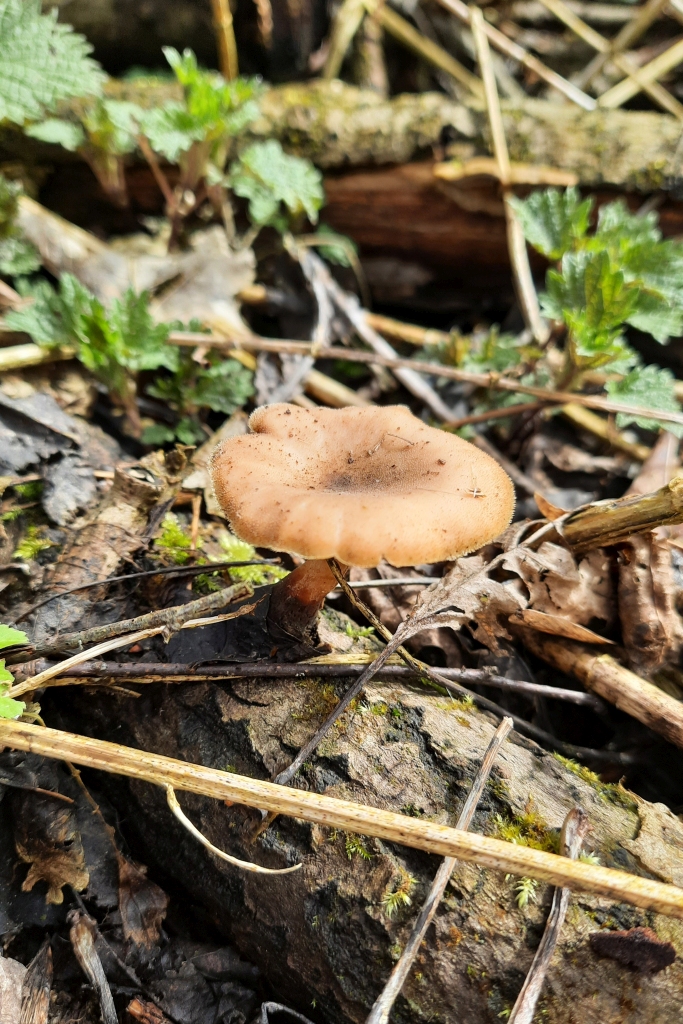
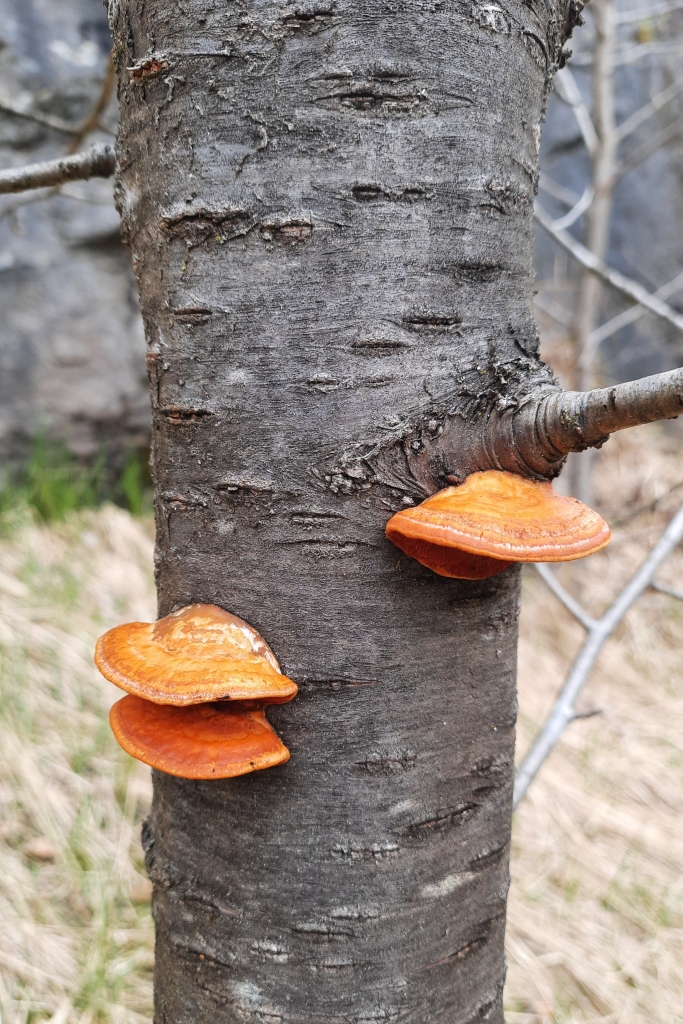
Figure 1 and 2: Winter-surviving species of winter-spring inedible mushrooms, Polyporus brumalis (left) and cinnabar polypore on a small cherry (Pycnoporus cinnabarinus, right), beginning of April.
At the beginning of April, big ascomycetes also begin to grow here. I found only one snow morel (Gyromitra gigas), but Sarcoscypha austriaca had a good season, it was possible to find even higher dozens of fruit bodies at many places.
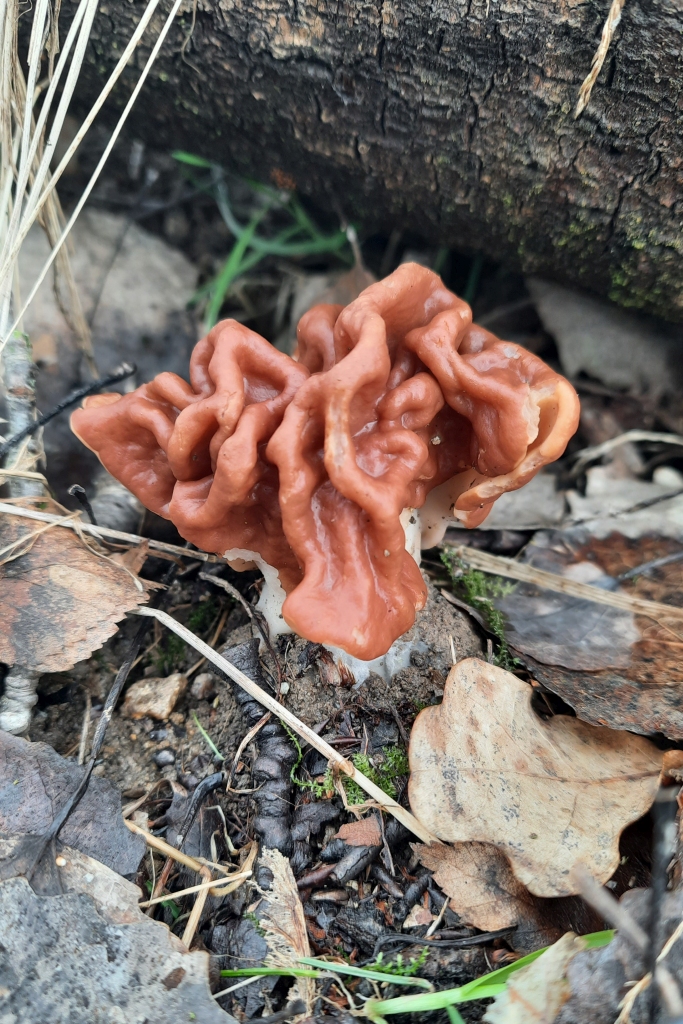
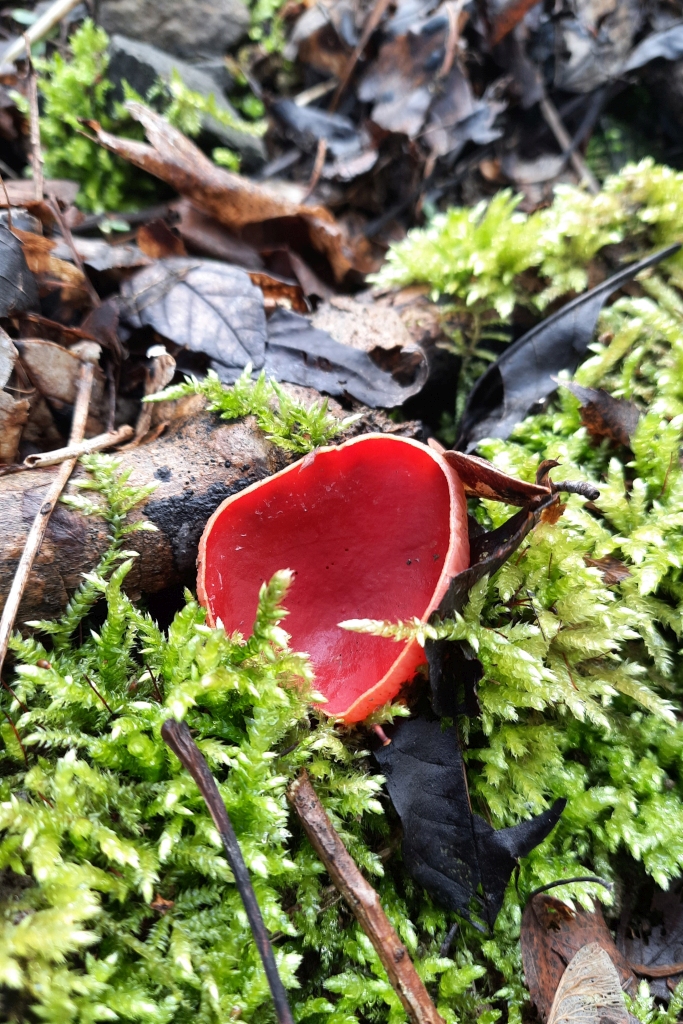
Figure 3 and 4: One of the first spring, big ascomycetes, snow morel Gyromitra gigas (left) and Sarcoscypha austriaca (right), beginning of April.
At the end of April, after prolonged rainfall, the glistening inky cap (Coprinellus micaceus), as it is its good habit, appeared directly in large numbers at several places. On a rotting stump, one can also find quite a large chorosh (Polyporus ciliatus), which produces classic mushroom fruiting bodies with a well-developed stem. Checking a few older hazel bushes, one could say that even the small and inconspicuous Encoelia furfuracea is quite abundant this year.
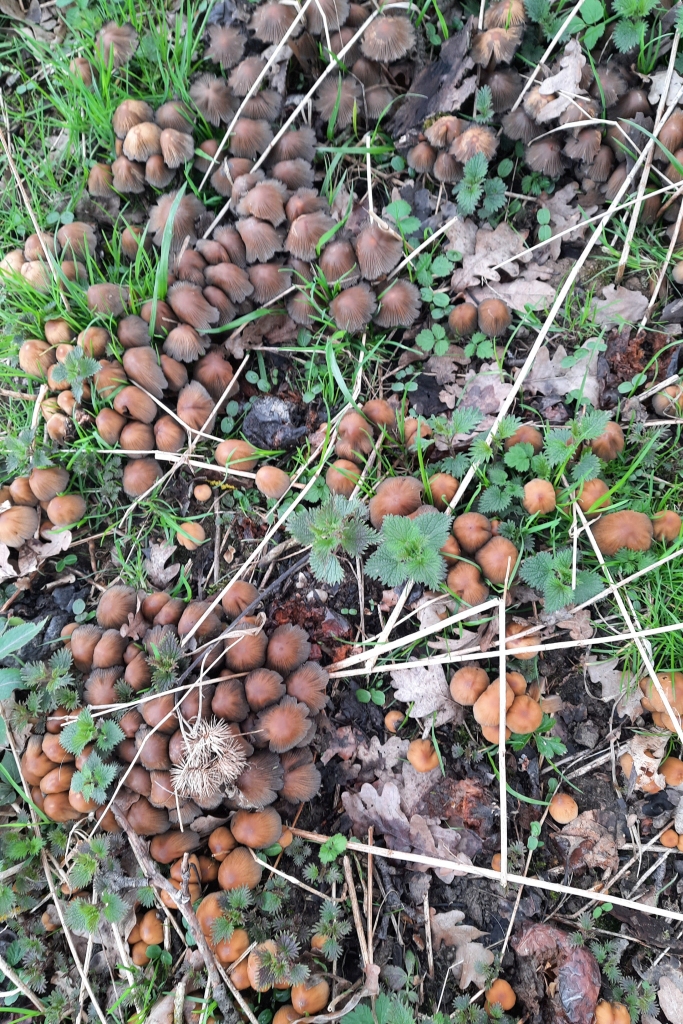
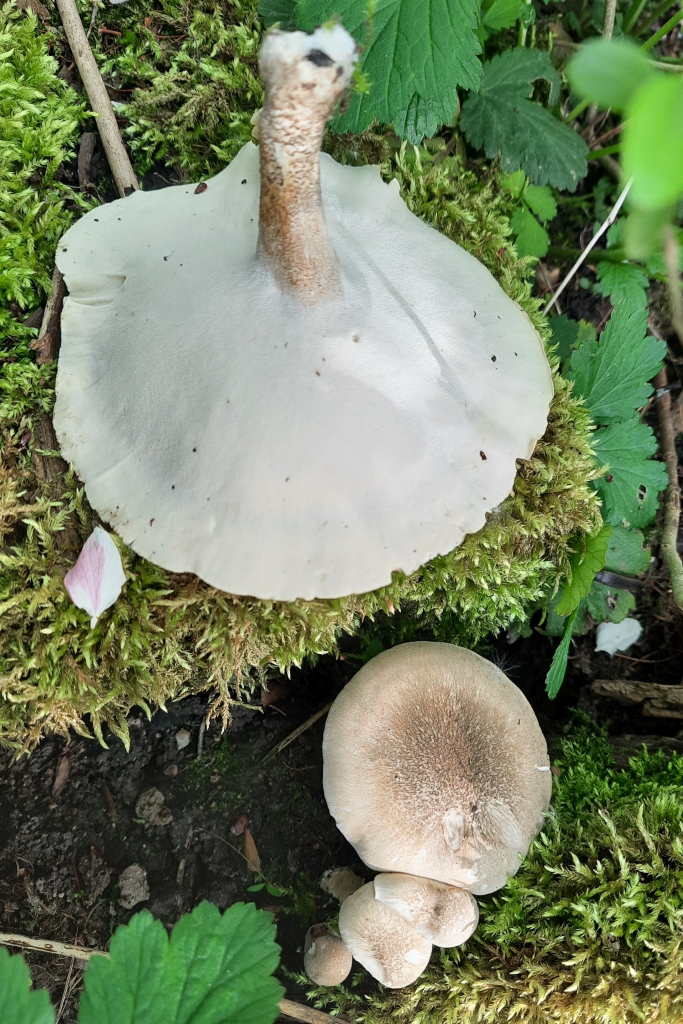
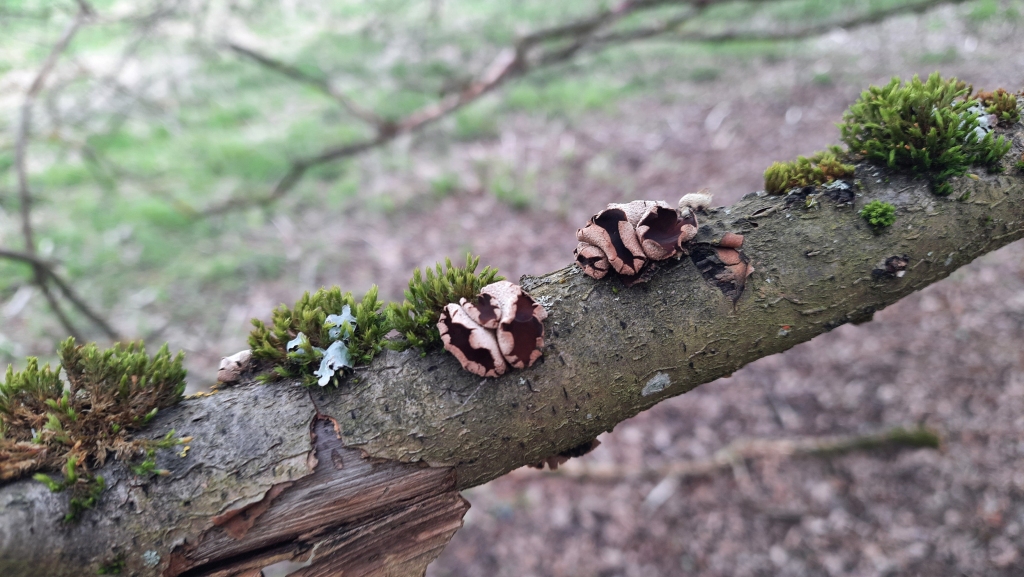
Figure 5, 6 and 7: Glistening inky cap (Coprinellus micaceus, left), chorosh mushroom (Polyporus ciliatus, right) and Encoelia on a branch of common hazel (Encoelia furfuracea, bottom), end of April.
St. George's mushroom and Entoloma clypeatum
Not counting Verpa bohemica and other morels, which I have never found on this vast massif of Bohemian granite Moldanubic pluton, the true spring mushrooming begins only with the first mushrooms, which could be also used in the kitchen. Yes, we are talking about the St. George's mushroom and Entoloma clypeatum. This year, thanks to the cooler spring, they took quite a while and appeared only after the bigger rains at the beginning of the general leafing of the trees in mid-May.
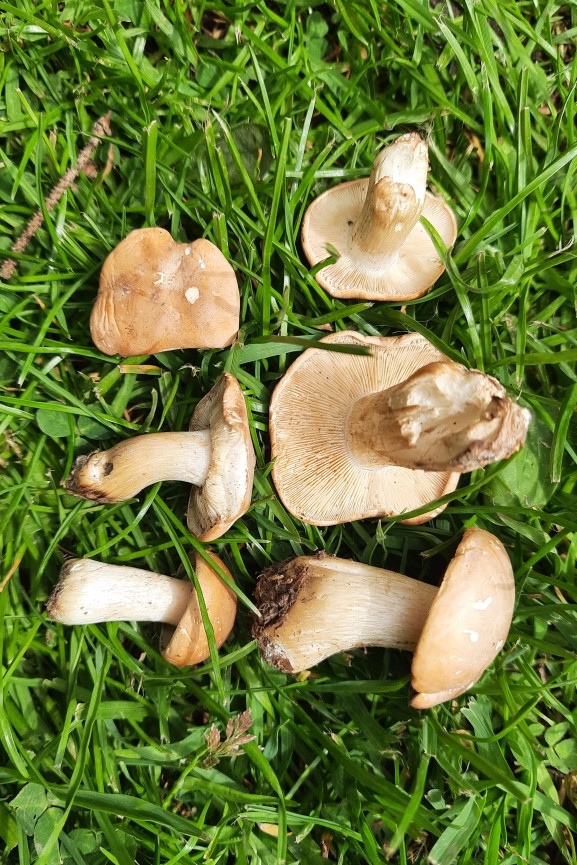
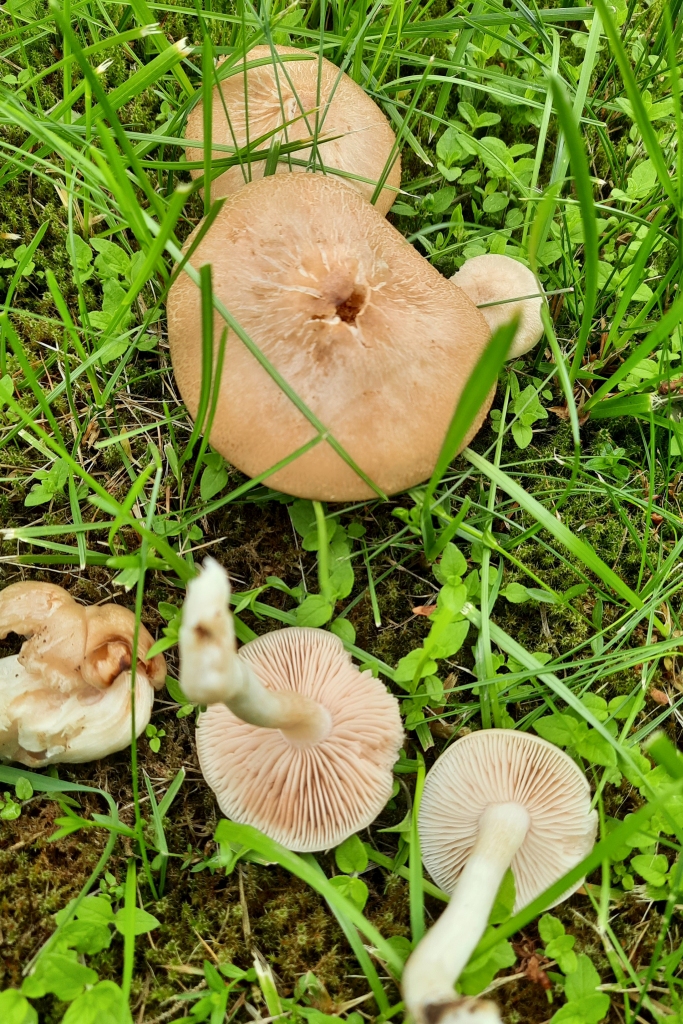
Figure 8 and 9: Edible spring mushrooms suitable for cooking as well, St. George's mushroom (Calocybe gambosa var. flavida, left) and Entoloma clypeatum (right), mid-May. When collecting, it is important to strictly assess the ecology and other characteristics of both types of mushrooms, otherwise there is a risk of confusion for poisonous mushrooms, such as deadly fibrecaps and other rarer toxic species.
The St. George's mushroom (Calocybe gambosa) grows in several varieties, from white, through bun (var. flavida) to yellow colour. It has a specific smell. Most literature describes it as floury, but I would rather smell it as a raw cucumber, with the wood blewit smelling rather similar to me. Very dense gills with white spore dust are also an important distinguishing feature. They are used in the kitchen in various ways, for its good firm consistency, for example in soups or in a creamy sauce.
Entoloma clypeatum is also a fairly variable fungus in shape and colour. It smells of raw cucumber like Calocybe gambosa, only less intensely. The gills are thinner with the typical veil-pink spore dust. The stem is fibrous and inside, it tends to be hollow in old age. The habitat on which the mushroom grows is crucial for collecting and picking. This is not only the sloe bushes where its Czech name "podtrnka" comes from, but also old orchards and gardens with Rosaceae trees, especially plum trees. The risk of confusion for similar but poisonous species is high, so it is good to collect this mushroom only from places where no oaks, beeches, conifers or other risky trees grow in the vicinity.
Pleurotus calyptratus
During this year's spring mycowanders I managed to discover a rare mushroom. It grew in one habitat on old fallen poplars, where it usually grows, during its usual May growth. The oyster mushroom (Pleurotus calyptratus) is included in the Red List of Macromycetes of the Czech Republic in the EN category (endangered) with only a few findings from the whole country in recent decades. It seems that it is starting to flourish in the Czech Republic and we can expect its greater occurrence in the coming years.
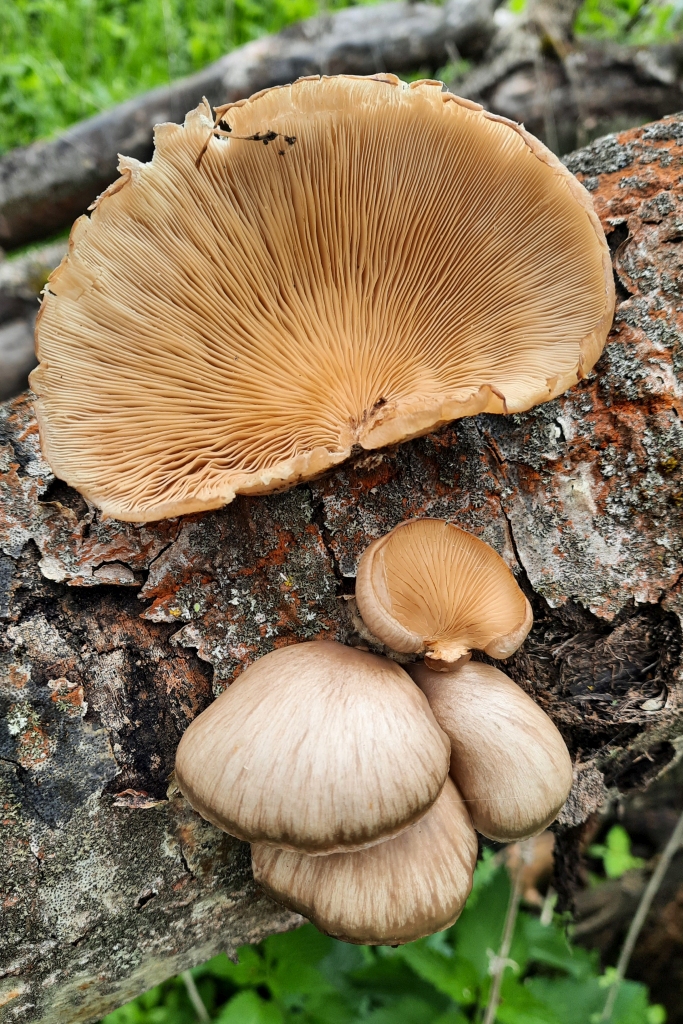
Figure 10: Rare capped mushroom (Pleurotus calyptratus) on a fallen poplar, mid-May.





